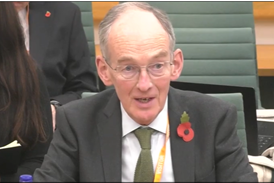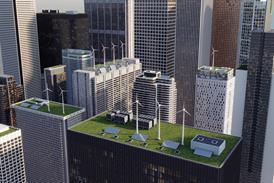Lord chancellor Shabana Mahmood today confirmed that England and Wales will follow Scotland and Northern Ireland in setting a new personal injury discount rate of 0.5%. Consumer groups welcomed her decision to 'err on the side of caution', but some claimant lawyers believe the higher rate will lead to more injured people being undercompensated.
The discount rate is a percentage figure used to help calculate how much defendants have to pay in damages to claimants in serious, life-changing personal injury cases, taking account of victims’ future losses and expenses. It has been set at -0.25% since August 2019, effectively meaning that damages are increased to account for the lack of potential returns on future investments.
Mahmood today notified the London Stock Exchange that she is changing the rate to 0.5% from 11 January.
Setting out her reasons, Mahmood said: ‘It is my duty to set the rate at the level which I believe most reasonably reflects the rate of return that claimants could be expected to receive from their investment of relevant lump sum damages. The objective of such payments is to put claimants back into the same position as they were before the accident, as far as possible with monetary compensation, and the purpose of the rate is to adjust the value of these payments to better ensure this outcome.’
Read more
Achieving a balance that avoids significant undercompensation for claimants but minimising excessive overcompensation is an ‘extremely complex and difficult’ exercise, Mahmood said. ‘It is very important to recognise that the Personal Injury Discount Rate will always be a relatively blunt instrument, since no one choice of rate can ever ensure that all claimants receive exactly their full compensation. When setting this rate, it is inevitable that some degree of over- or under-compensation of claimants will occur in individual cases.’
The expert panel's recommendation in the previous review was based on an assessment of the investment decisions, returns, and expenses of a single ‘representative claimant'. The expert panel for Mahmood's review based its assessment on several ‘core claimant types’.
Mahmood's expert panel recommended a rate between 0.5% and 1%, but the lord chancellor believed a rate higher than 0.5% produced 'too high a risk' of undercompensation.
Matthew Maxwell Scott, executive director of the Association of Consumer Support Organisations (ACSO), said the lord chancellor had ‘sensibly erred on the side of caution. In resisting siren voices calling for a much higher rate, she has done the right thing by seriously injured people while also ensuring that costs to compensators are kept under control.'
However, the Association of Personal Injury Lawyers (APIL) warned that more injured people will likely be undercompensated in consequence.
APIL treasurer Gordon Dalyell said: ‘Even under the current rate of -0.25 per cent, we know that a third of people with life-changing injuries will not meet the costs of their necessary care and support. Any increase in the discount rate makes it more likely that more injured people will be undercompensated. Victims of negligence, who have already been through so much, should not have to face financial pressure to have their basic needs met. People with catastrophic injuries are particularly susceptible to the rising costs of living we’re seeing across the board, which includes increases to carer wages and the cost of specialist aids and equipment, for example.’
Mahmood's expert panel ruled out a dual rate after considering the option during the review. Alistair Kinley director of policy and government affairs at Clyde & Co, said: 'Although the government had consulted in 2023 about possible options for dual or multiple rates, we expect its reasons for not pursuing that option and retaining a single rate will be to avoid increased complexity, delay and cost that would be associated with dual rates.'
The Civil Liability Act 2018 requires the rate to be reviewed again by 11 January 2029.
This article is now closed for comment.




























3 Readers' comments